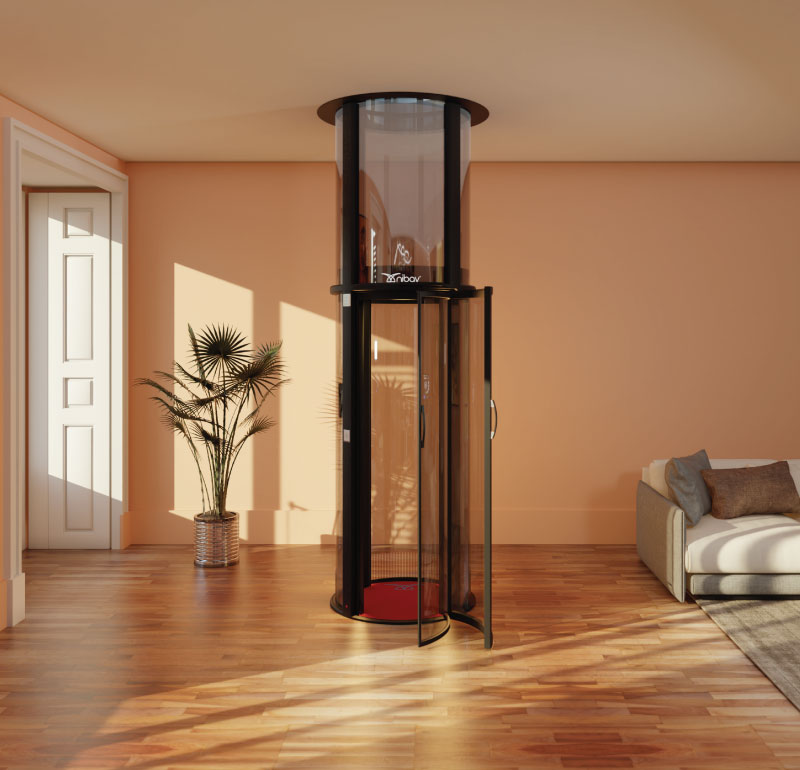1. Understand the Basics: What Influences Home Elevator Costs?
To bring people up to speed, before learning about ways to cut on costs further on in this article, there is a need to establish the cost determinants associated with installing a home elevator. A few of such would, for instance, be:
- Type of Elevator: there are various kinds of elevators, which include: hydraulic, pneumatic, cable. And traction (gearless). Even within the same category, the cost estimates will, however, vary with the hydraulic system being the most expensive and the vacuum/pneumatic elevator most of the time being on the lower side.
- Number of Stops: logically, an elevator that serves more floors is likely to be more expensive than one that serves fewer floors. Elevators that go over two floors are likely to be pricier than this one that goes only three or four.
- Customization: as is the case with the majority of the systems, most home owners desire customized rough and decorative work, a feature that can also add onto the cost incurred. Basic shapes tend to cost less compared to those with special materials such as door glass or special pattern floor design.
- Labor and Installation: directly depending on the type of house and the structure of the building labor and installation costs might differ. For homes that need a lot of alteration work to fit in an elevator, such costs are likely to be high.
2. Choose the Right Type of Elevator
The prices of the home elevators result from various factors and choosing the right system that suits the house can affect the ultimate cost. Here’s a quick overview of the most widely used types and how costly they are:
- Hydraulic Elevators: Compared to the rest, these are quiet and effective but more often than not come as the most expensive because of the presence of a machine room and high installation complexity. If your budget allows, they are great buys, but they are not the most economical.
- Cable-Driven Elevators: A bit less expensive than hydraulic elevators, these below are still pretty in use. Yet, they come with a cost because maintaining the cables to prevent their tendons from failing entails periodic cost incurrence.
- Pneumatic Elevators: Commonly referred to as vacuum elevators, these have fairly low installation costs since no machinery room is needed. Pneumatic elevators are very much efficient and cost less to construct in smaller houses since the air pressure moves the cabin.
- Chain-Driven Elevators: These provide an average choice. A machine room is unnecessary and maintenance is low depending on the environmental conditions from which the elevator is used. They too are usually relatively cheaper up front as compared to hydraulic options.
3. Opt for a Standard Model
The cost of a home elevator can be further increased with the provision of more customization features. For example, the glass doors, or mirrors, or other high-class finishes, for instance, can increase the cost of the elevator by thousands of dollars more than the average. There is a huge price drop when purchasing a home lift if you go for a more basic model with average features.
In case your aim is to cut costs at all costs, it would be worth it to consider functionality over beauty. The vast majority of the available standard models do not lack in quality materials or quality mechanisms, which are rather cost-effective.
4. Limit the Number of Stops
As it was already discussed, the price will be influenced by the number of floors serviced by your home elevator. An equipment and installation cost is incurred for each extra stop.
If there are ceilings for, it is advisable to only limit the aim of your elevator to the target floors to the extent possible. For example, a two-floor elevator may be enough for a home where mobility only restricts the user to the main living areas and the bedroom. Even where there is a basement or an attic, the elevator may not need to cover these areas especially when the facilities are not put into regular use.
5. Pre-Plan During Construction
If planning the construction of a new home, or majorly changing an existing one such as a renovation, it is cost effective to incorporate a home elevator at the initial stage of building. An elevator which is added into the existing building demands a very disturbing site work such as floors cutting or structurally integrating additional supports.
In this way, the mention of additional factors during construction can be avoided. However, even if you feel installing the lift is not on your agenda yet, it makes sense to reserve some extra square contours such as a shaft or a closet in order to lessen expenses at a later stage.
6. Shop Around for Contractors
It is noted that not all elevator installation companies have identical pricing and level of service. The same is true with this project or any kind of other home remodeling or improvement. Consultation will be necessary. Some companies may provide special offers that lower the price of installment.
In such instances, looking only at cost is inadequate, you must look at other important matters. Read more in the reviews and inquire about their warranties, service plans, and any other fees that may not be truly affiliated with the job scope. Therefore, choosing a trustworthy contractor will bring less trouble later that would have been more costly.
7. Consider Refurbished or Used Elevators
Searching for refurbished or used home elevators is one of the most effective methods for lowering costs. Most firms sell ex-elevator models after refurbishing and meeting the assessments to determine whether the elevator is now safe to use. In most cases, these are a lot cheaper than purchasing a new one.
Bear in mind, however, that not every home can accommodate such an extra feature as a used elevator. Older models may need special conditions to be installed or have to be kept in certain ways, which may be discussed with your contractor.
8. Regular Maintenance to Avoid Costly Repairs
After the installation of your home elevator, regular maintenance is essential to prevent repair or replacement in future. Routine inspections and servicing can help identify minor problems before they escalate into a full blown problem. In the long run, this can save you thousands of dollars by extending the lifespan of your elevator and avoiding failures.
Generally, an annual service check is recommended by most manufacturers, but in case of an accident at the elevator, rest assured that it will require scheduled proper servicing immediately. You have to be clear of the servicing timelines and the cost involved in servicing, before you decide to buy your home lift.
9. Look for Energy-Efficient Models
Although an energy saving elevator might cost you more at the beginning, he will help you lower your utility costs over a period of time. Modern day elevators that are built to conserve energy require less power and have cheap running costs compared to the traditional elevators.
For instance, pneumatic elevators operate with air pressure and gravity, thereby using up less energy in the process. This can especially be helpful for the people who need to spend as little to maintain such costs as possible.
10. Take Advantage of Tax Deductions and Incentives
It might come as a surprise, however. Depending on where you live and your specific needs, you may be eligible for tax deductibles or government incentives when installing a home elevator. Installing such elevators for medical conditions like being able to move around may also be considered a home improvement that can be claimed as a tax deduction. Additional costs associated with installing a home elevator might even be offset by state incentives for such measures as energy saving enhancements or accessibility improvements.
Always be sure to speak with a tax professional about any deductions or incentives you may be in the market for.
End Note
Home elevator installation is often a financial burden for many. However, there are many strategies that can help in reducing the costs. Although the prices are discouraging, the proper selection of the elevator type and some pre-planning will help in cutting the home elevator cost. What’s more, looking for contractors in different companies, searching for second hand ones, and applying for grants reduces the outlays even more. Nevertheless, with planning and research, a home elevator can be installed without much strain and provide a good return on investment.


